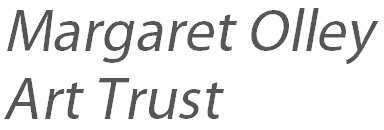A new exhibition exploring the history and site of the 1838 Myall Creek Massacre through the work of some of Australia’s leading indigenous artists is expected to challenge visitors to take a new look at the history of the region.
The exhibition Myall Creek and beyond is being opened at the New England Regional Art Museum (NERAM) in Armidale at 6.00pm on Friday 8 June 2018 by Keith Munro, Curator of Aboriginal and Torres Strait Islander Programs and member of the National Committee of the Friends of Myall Creek Memorial who is a descendant of the Kamilaroi people of the area.
Myall Creek and beyond has been over two years in development by the New England Regional Art Museum working with guest curator Bianca Beetson and features new works by artists Robert Andrew; Fiona Foley; Julie Gough; Colin Isaacs; Jolea Isaacs; David and Tim Leha with Quarralia Knox; Laurie Nielsen; Judy Watson, Warraba Weatherall, as well as the Myall Creek Gathering Cloak made by members of the local community working with Carol McGregor, Adele Chapman-Burgess and Avril Chapman..
“This has been one of the most challenging and complex projects that NERAM has undertaken in its recent history,” said Robert Heather, Art Museum Director. “It is challenging to develop an exhibition that covers such a difficult and sad subject, but also because it has involved working across our large and diverse region with a number of different communities.”
“The participating artists visited the Myall Creek Memorial site near Bingara, and attended the 2017 Memorial event organised every June by the Friends of Myall Creek Memorial on the anniversary of the massacre as well as met with members of the local community to talk about its significance with them.”
The exhibition commemorates the Myall Creek Massacre when 28 people were murdered by a group of eleven convicts and ex-convict stockmen led by a squatter on 10 June 1838. Although there were many other massacres of indigenous people that occurred during the Frontier Wars across Australia, this one had special significance because it was the only time when white men were, arrested, charged and hung for the massacre of Aboriginal people, following a police investigation.
“The artists selected for this exhibition were chosen due to their ability to create work which deepens the conversation,” said Guest Curator Bianca Beetson. “All of them, in different ways, interrogate dialogues surrounding Aboriginal massacres, frontier wars and hidden histories, whether it’s through the artists creating work which responds to the place ‘Myall Creek’, or the artist’s broader response to issues surrounding Australia’s frontier history.”
“This presented a challenge when curating this exhibition, as was I faced with trying to curate work that authentically engages with the story of atrocities such as Myall Creek, but at the same time I was mindful of not triggering trauma in Aboriginal and Torres Strait Islander audiences who share this dark history.”
Each artist responded differently to the experience and the exhibition ranges from the confronting sculptures of Laurie Nilsen and the large scale installation work of Fiona Foley through to the creative documentation of the site by Judy Watson that brings together works on canvas and video.
Inverell based artist Colin Isaacs is known as the Myall Creek artist for his works on the site of the Memorial and Warrabah Weatherall interrogates notions of surveillance and spatial violence in a new work produced for the exhibition.
Composer David Leha (Radical Son) and filmmaker Tim Leha worked with emerging singer-songwriter Quarralia Knox to create a video featuring the voices and sounds of young people from throughout the region through a series of workshops in the New England communities of Armidale, Bingara, Glen Innes, Guyra, Inverell, Moree, Tingha and Uralla.
Artist Carol McGregor also worked alongside Adele Chapman-Burgess and Avril Chapman to undertake several community workshops in April 2018 which enabled Aboriginal communities of Bingara and Inverell and surrounds to create a possum skin cloak for the exhibition.
The exhibition Myall Creek and beyond is opening in June 2018 as part of the commemorations for the 180th anniversary of the Myall Creek Massacre being organised by the Friends of Myall Creek Memorial. The program includes a historical exhibition at the Armidale and Region Aboriginal Cultural Centre and Keeping Place, a symposium at the Oorala Aboriginal Centre at the University of New England and a concert at the Roxy Theatre at Bingara.
The 180th anniversary Memorial event will be held at the site of the Myall Creek Massacre Memorial on Sunday 10 June 2018 and as part of the exhibition program NERAM is organising a free bus for visitors and members of the local community to attend.
Full program details are available online.
The exhibition Myall Creek and beyond will be on display at the New England Regional Art Museum from Friday 8 June until Sunday 7 October 2018.
Myall Creek and beyond is a partnership between the New England Regional Art Museum and the Friends of Myall Creek Memorial and has been supported by Regional Arts NSW through the Regional Arts Fund, the new South Wales Government through Create NSW and the Australian Government Department of Communications and the Arts Indigenous Language and Arts Program.
Our exhibition sponsor is JNC Group.
Project partners include:
- Arts North West
- Armidale and Region Aboriginal Cultural Centre and Keeping Place
- Beyond Empathy
- University of New England
- Oorala Aboriginal Centre at University of New England
- Friends of Myall Creek Memorial – Armidale Chapter

Image above:
David & Tim Leha, Aerial shot of Myall Creek memorial site 2018




